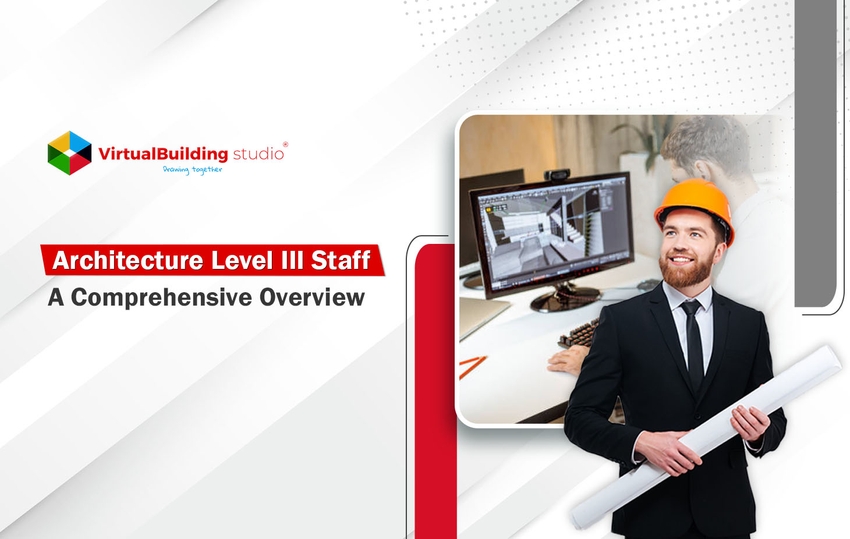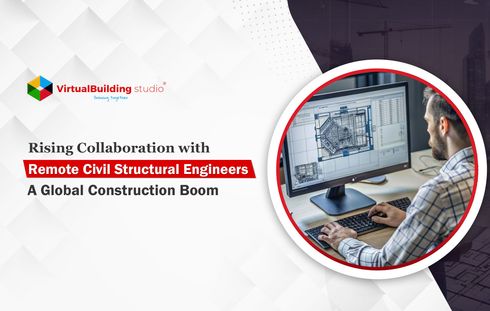
Architecture Level III professionals serve as key leaders who bridge the gap between senior architects and junior staff, ensuring design quality, project efficiency, and regulatory compliance. This role requires advanced design leadership, coordination, and mentoring.
According to The Architect’s Handbook of Professional Practice (9AIA, 15th Edition), the Architecture Level III professional has a crucial role in maintaining architectural standards.
They oversee project execution, aligning design with client expectations and regulatory guidelines. With the rise of remote work, dedicated remote architects enhance flexibility and efficiency while reducing operational costs.
This role is ideal for a professional with 7-10 years of experience in design, leadership, and technical expertise. A strong portfolio demonstrating complex architectural projects and coordination experience is essential.
Responsibilities of an Architecture Level III Staff
Project design and development
They will lead the conceptual and schematic design phase, ensuring innovation and sustainability.
Collaboration with senior architects and engineers
Architecture Level III professionals coordinate with interdisciplinary teams, resulting in the seamless execution of the projects.
Oversight of junior staff and interns
They would mentor junior designers and interns on the practices.
Ensuring compliance with project standards and building codes
Their responsibility is to ensure that the project adheres to the International Building Code (IBC) and LEED to meet the legal and environmental requirements.
Coordination with clients and stakeholders
They manage client relationships and project expectations for seamless project execution.
Essential Skills and Qualifications for Architecture Level III Staff
A Level III architect must have a Bachelor’s or Master’s degree in Architecture from an accredited institution such as those recognized by the National Architectural Accrediting Board. The educational foundation should provide the necessary theoretical and practical understanding of architectural principles.
With that, technical efficiency is a must, requiring expertise in industry-standard software such as Revit, AutoCAD, and BIM tools. These facilitate design accuracy, collaboration, and efficiency in complex projects.
Apart from technicality, problem-solving and creative abilities are required. A good Level III architect must be able to integrate innovative ideas without compromising functionality. Efficient project management and communication skills also distinguish professionals at this level.
The skills for leading teams, interacting with clients, and overseeing multiple project timetables must be of the highest organizational and interpersonal standards, according to the Project Management Institute.
Challenges Faced by Architecture Level III Staff
Managing multiple projects and deadlines is challenging for Architecture Level III staff. Scheduling and prioritizing are critical to ensure that project deadlines are met without missing out on any details.
Architectural projects often involve complex coordination of various sets of teams, requiring detailed orientation and the ability to adjust timelines based on the requirements of the project.
According to Architectural Digest, the ability to juggle competing project pressures, and deliver on schedule, is a level III architect's skill.
Another challenge is navigating client expectations. Architects must balance the client’s vision, practicality, and finances. This can be a challenge when clients have specific, often evolving, ideas that might conflict with the practicality.
The art of managing client relationships ensures they remain feasible and within budget. As DesignBoom mentioned, successful architects must communicate with clients to ensure their needs are addressed in the integrity of architectural design.
Adaptation of technological advancement is another challenge. This rapid pace of change requires constant learning and adaptation.
These technologies have the potential to enhance design accuracy, presentation quality, and project management efficiency.
They also require architects to be acquainted with the evolving tools and incorporate them into the workflow. Architects must align with the growing technological trends to maintain a competitive advantage and provide innovative solutions to clients.
Remote Architects and Team Integration
The rise of remote work brought significant advantages to the architectural industry through remote architects collaborating with project teams.
Remote architect teams offer cost-effective solutions by reducing the need for physical office spaces, enabling firms to hire talent from a global pool.
This flexibility allows practice to scale their team as per the expertise requirements of a project without confining to location.
With advanced communication and project management tools, Remote architect teams improve their workflow efficiency, enabling seamless collaboration.
These tools allow architects to access design files, drawings, and project updates from anywhere, leading to informed decision-making. The ability to work across different time zones can help to ensure that project progress is aligned with the desired timeline.
Tools and Technology for Success
Advanced tools play a pivotal role in enhancing the precision and coordination of architectural teams. BIM technology enables architects to create virtual models of existing buildings, improving design precision and minimizing construction errors.
BIM facilitates real-time updates, where different members of the team, from designers to engineers, can work on a common platform, with all stakeholders coordinating effectively to achieve project specifications.
Remote collaboration platforms majorly contribute to the hybrid and remote work era. They are essential to enable the team members positioned in different offices or remote locations to stay connected and work together in real time.
Remote collaboration platforms increase productivity, a sense of togetherness, and team building, leading to smoother workflows and faster problem-solving processes.
Tips for Excelling as Architecture Level III Staff
Effective time management is key for Level III architects. Using Asana or Trello will help in prioritizing tasks, ensuring to meet deadlines. Staying informed about industry trends and attending key conferences helps foster continual learning and innovation for remote professionals.
Clear communication is essential to maintain a healthy relationship with the team and clientele. Regular updates and feedback ensure alignment and project success.
Architecture Level III Staff with DRM Solutions
Companies can hire level III remote professionals from the top 1% of the talent pool of architects and engineers worldwide offered by the Dedicated Resource Model(DRM).
The top-grade professionals offer specialized expertise, global team expansion, cost reduction, and enhanced efficiency. Integrating DRM proprietary solutions helps mitigate the skills shortages, ensuring access to experience required for seamless project execution.
Conclusion
Hiring Architecture Level III staff is critical to the success of any architectural project. These professionals bring a mix of technical competence, creative insight, and leadership potential that serve to the effective execution of designs and fulfillment of client specifications and regulatory standards.
Their ability to manage large projects, instruct lower-level staff, and implement new technologies is an invaluable asset to any organization. In an ever-evolving industry, Level III architects play the vital role of encouraging innovation and high standards of quality, particularly when remote working and digital media further revolutionize architectural careers.




